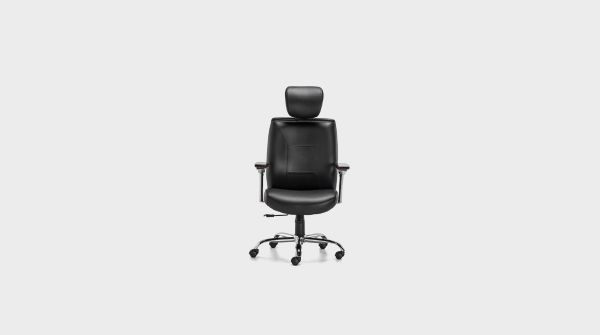When it comes to choosing the right chair for your workspace, the differences between an executive office chair and a standard office chair might not be immediately obvious. Yet, those distinctions can greatly affect your posture, productivity, and overall work experience. This article explores the nuanced characteristics that set executive office chairs apart and why your choice in seating should be more than just a matter of style.
Understanding the Basics
To begin with, it’s important to understand what each type of chair is designed for. A regular office chair, commonly found in most workplaces, is built for functionality and cost-efficiency. It’s usually compact, lightweight, and designed for general use. On the other hand, executive office chairs are typically reserved for leadership roles or personal workspaces where comfort, status, and extended use are crucial factors.
Executive chairs stand out for their tall backrests, luxurious cushioning, and high-quality materials. These chairs are often viewed as a symbol of authority and professionalism, designed to offer maximum support over long working hours. But there’s more to their design than meets the eye.
Design and Aesthetics
One of the first noticeable differences lies in the design. Executive chairs tend to be larger, both in height and width. The high backrest, often coupled with a headrest, gives a commanding presence that is ideal for managerial offices. The materials used, such as leather, high-grade fabric, or a combination of both, also elevate the overall look and feel of the chair.
In contrast, regular office chairs are more utilitarian in appearance. They may feature mesh backs for breathability, simpler armrests, and a more minimalistic design. These are meant to blend into an open-office environment without drawing much attention.
Comfort and Ergonomics
This is arguably the most critical area of differentiation. Executive chairs are built for superior comfort. With generous cushioning, contoured backrests, and lumbar support, these chairs are designed for prolonged sitting. Many executive models also incorporate an ergonomic design that supports the spine, neck, and shoulders, making them an excellent option for those who spend long hours behind a desk.
Interestingly, while regular chairs often market themselves as ergonomic, they typically come with basic adjustable features. They might offer height adjustments, some degree of tilt, and basic lumbar support. However, they generally fall short in comparison to the multi-adjustable features offered by high-end executive chairs.
That said, it’s not just executive chairs that focus on posture and health. There’s a rising demand for an ergonomic chair for office use in various settings. These chairs, while not necessarily as luxurious as executive models, do prioritize posture and long-term well-being.
Build Quality and Materials
Another aspect where executive chairs shine is in their build quality. These chairs are often constructed with stronger frames, high-density foam, and durable upholstery. Whether it’s real leather or high-quality PU, the materials are chosen not just for aesthetics but also for durability.
Regular office chairs, especially those in the budget segment, are more likely to use plastic components, thinner padding, and basic upholstery. While these can still be quite functional, they don’t usually match the longevity and luxurious feel of an executive chair.
Adjustability and Customization
Executive chairs frequently offer a wider range of adjustment options. Beyond basic height and tilt adjustments, users can often adjust the angle of the backrest, the position of the armrests, and sometimes even the tension of the recline. This makes it easier to personalize the chair for maximum comfort.
On the flip side, standard office chairs offer limited customization. While some models have good ergonomic features, the range of adjustability is generally more restricted. This makes them less ideal for users with specific comfort requirements or pre-existing back issues.
Intended Use and Placement
Executive office chairs are not just about function, they also communicate status. These chairs are usually found in private cabins, boardrooms, and home offices. They reflect a level of seniority and are often used to complement a more sophisticated office setup.
Regular chairs are geared toward high-volume usage. They are best suited for shared desks, coworking spaces, and environments where cost-efficiency is a bigger concern than luxury. They fulfill the basic requirements but might not offer the same long-term comfort or visual appeal.
Price and Value
Unsurprisingly, executive chairs usually come with a higher price tag. However, the added cost is often justified by the superior comfort, durability, and design. For professionals who spend several hours a day at their desks, the investment in a quality chair can pay off in better posture, less fatigue, and enhanced productivity.
Regular office chairs are more affordable, making them ideal for startups, shared offices, or secondary workspaces. While they do offer basic comfort and utility, users may find themselves upgrading sooner due to wear or discomfort.
Long-Term Health Considerations
Posture-related problems have become increasingly common among working professionals. Poor seating can lead to chronic back pain, neck strain, and even reduced concentration. Executive chairs, with their ergonomic build and premium support features, are often better equipped to address these issues.
Even if one opts for a standard chair, choosing an ergonomic chair for office use becomes essential. Chairs that support natural body alignment can prevent long-term health problems, even if they don’t offer the plush comfort of executive models.
Final Thoughts: Making the Right Choice
So, how do you decide which chair is right for you? The answer depends on several factors: your budget, the amount of time you spend at your desk, your physical needs, and the image you want to project in your workspace.
If you’re someone who spends the better part of your day seated, especially in a decision-making role, then investing in a premium executive chair could be well worth it. It provides not just comfort, but also a sense of stability and professionalism.
On the other hand, if you’re furnishing a shared office or need a practical solution without frills, a well-designed standard office chair might do the job. Just be sure to choose one that supports good posture and offers a few adjustable features.
Regardless of the route you choose, remember that a chair is more than a piece of furniture. It’s a tool that can either enhance or hinder your productivity, health, and overall work experience. Make the choice that aligns best with your daily needs and professional goals.





